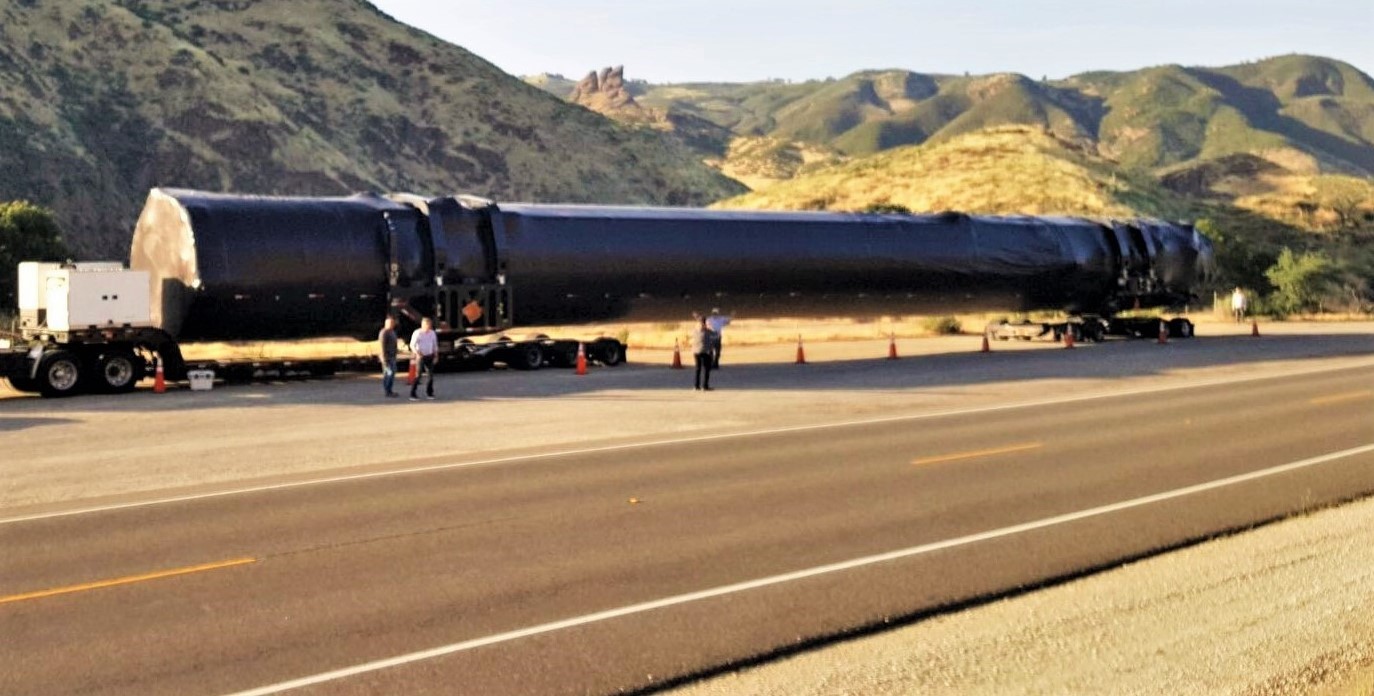
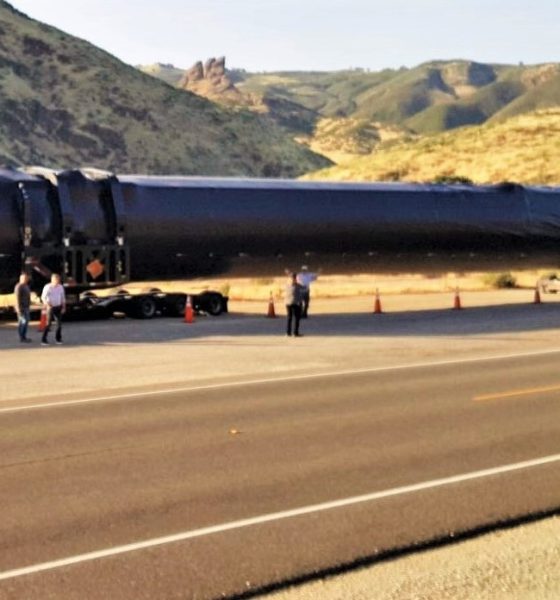
News
SpaceX Falcon 9 booster spotted in Southern California on journey to Florida
On August 20th, a member of a local California Facebook group happened to spot a SpaceX Falcon 9 booster in transit, an exceedingly rare sight as of late. Moving east, the booster is almost certainly heading to Florida to support a major cluster of 6-8 launches in Q4 2019.
This marks the first time in nearly four months that a flight-proven Falcon 9 booster has been spotted in transit, excluding a lone (unflown) booster captured on its way to McGregor, Texas last month. This also serves as an opportunity to reexamine the status of SpaceX’s expansive fleet of reusable Falcon 9 Block 5 rockets as the company prepares for a busy end of 2019 in the midst of a rare multi-month lull in launch activities.
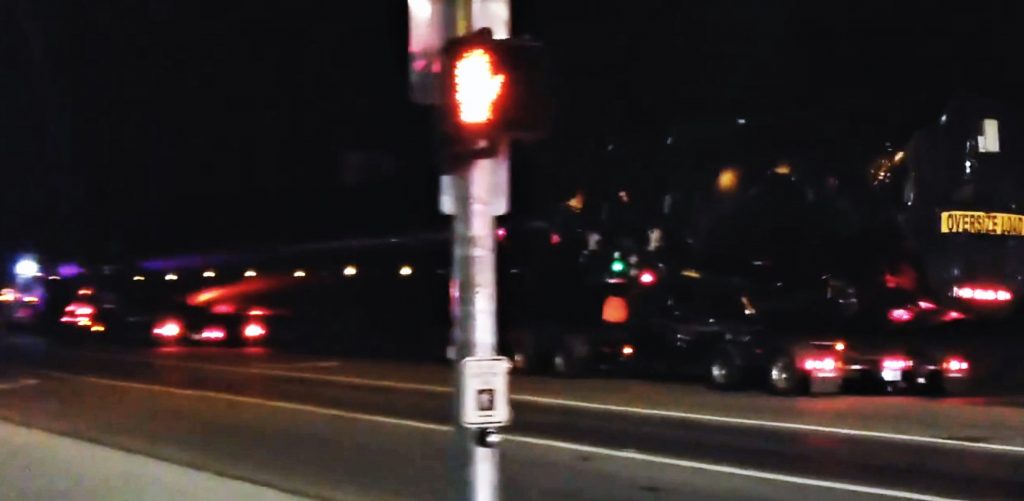
Based on the timing, its location (Southern California), and the direction it was headed (Eastbound), the rocket spotted on August 20th is almost certainly twice-flown Falcon 9 booster B1051. The booster was likely departing SpaceX’s Vandenberg Air Force Base (VAFB) launch facilities after some two months post-launch inspections and refurbishment, having completed its second launch and landing on June 12th, 2019 in support of the Radarsat Constellation Mission (RCM).
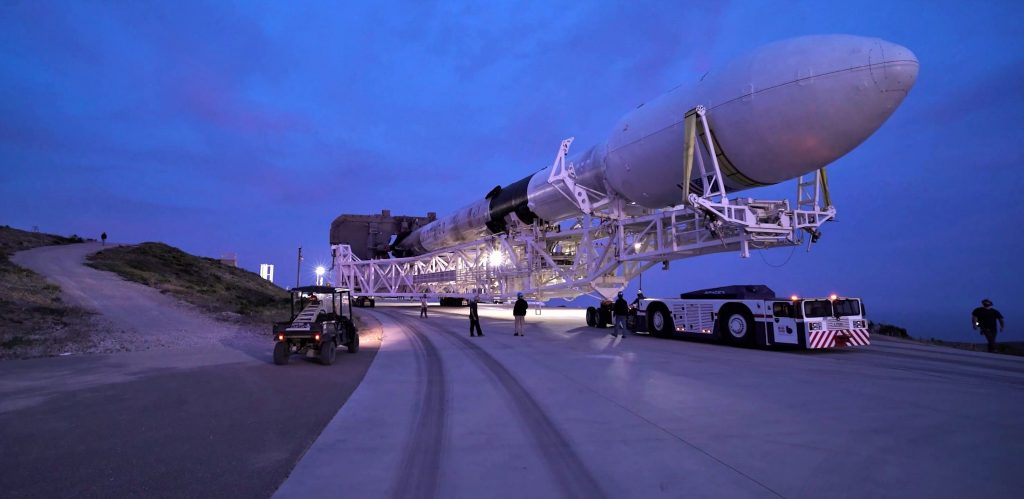
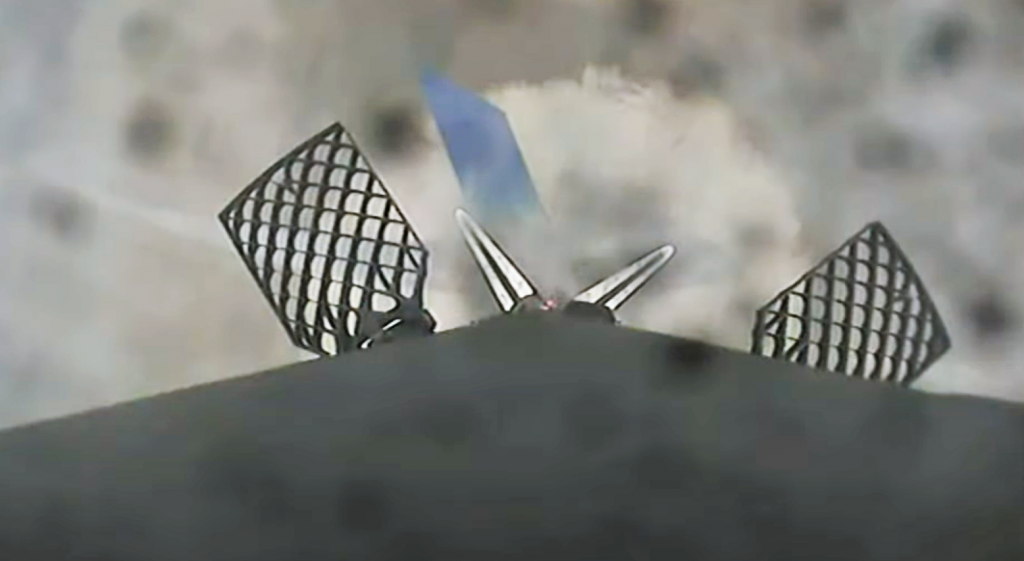
Prior to its successful launch of RCM, B1051 had the historic privilege of supporting the inaugural orbital launch of SpaceX’s Crew Dragon spacecraft, putting the next-gen crew capsule through its paces before a crewed launch debut expected to occur absolutely no earlier than (NET) December 2019. Known as DM-1 (Demo-1), B1051 was subjected to an exceptionally strenuous suite of inspections, analysis, and testing for the mission – from the very first welding sparks to the booster’s McGregor, TX and Florida static fires and launch debut.
Said debut occurred on March 2nd, 2019, after which B1051 landed at sea aboard drone ship Of Course I Still Love You (OCISLY).
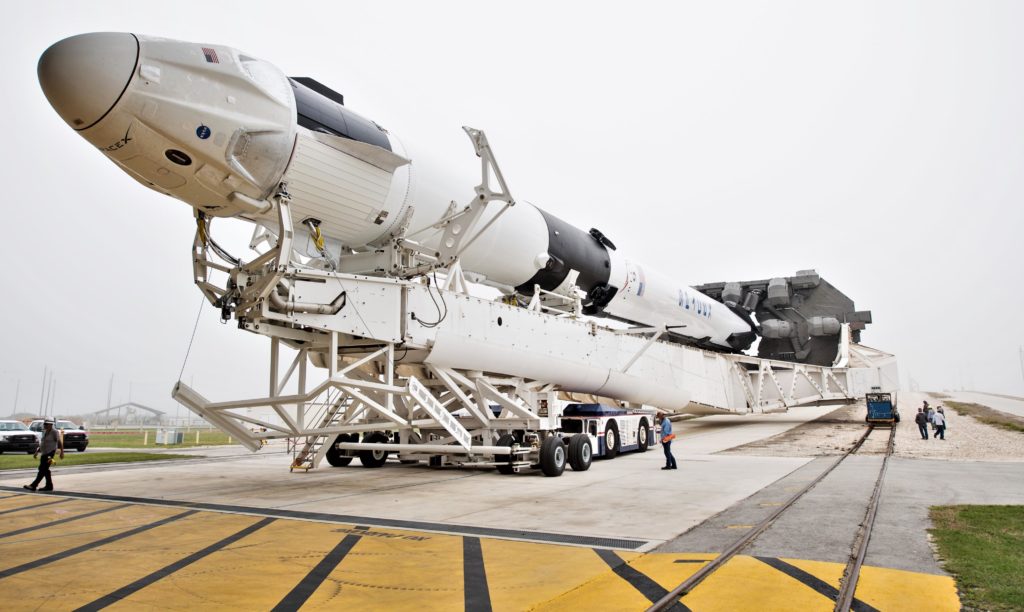
SpaceX production experienced an exceptionally frenetic period from early-2018 to mid-2019, in which the company averaged the completion of almost an entire Falcon 9 or Heavy rocket every 1-2 months, building, delivering, launching, and relaunching Falcon boosters B1046 through B1057 from ~January 2018 to April 2019. In the last 3-4 months, the (publicly visible) rate of rocket production has dramatically slowed, presumably an intentional slow-down triggered by SpaceX’s rapidly growing fleet of flight-proven boosters.
In the last four or so months, unaffiliated observers have spotted a grand total of one new Falcon 9 booster on its way from SpaceX’s Hawthorne, CA factory to its McGregor, TX testing facilities. That booster – likely either B1058 for Crew Dragon’s crewed launch debut (Demo-2) or B1059 for SpaceX’s next USAF GPS III launch – was spotted twice headed east in Arizona on July 29th. Prior to that, the next most recent ‘core spottings’ occurred in mid-to-late April, while the most recent since July 29th’s instance is B1051.2’s August 20th appearance. In short, things are unusually quiet on the SpaceX booster transport front.
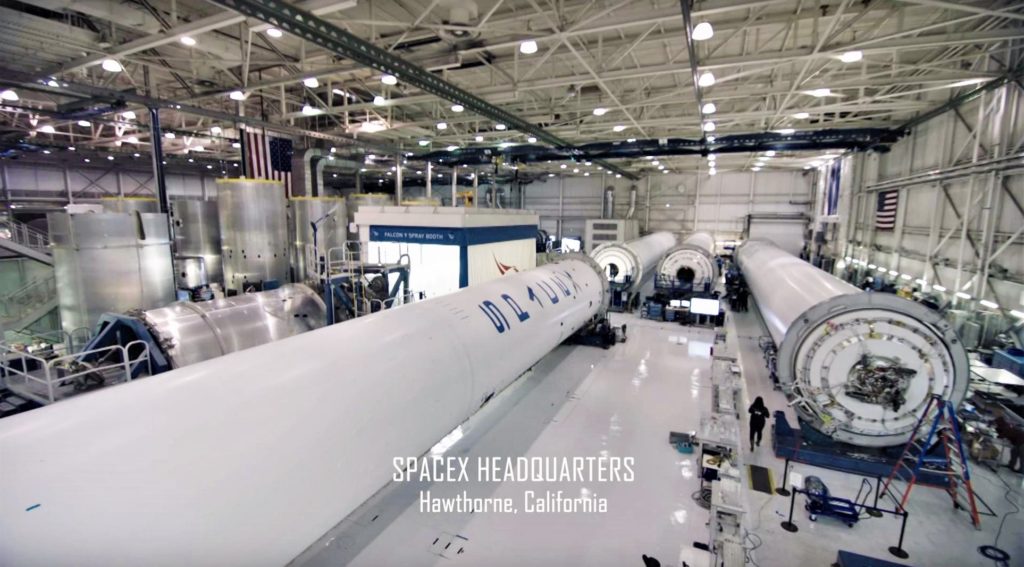
Rocket fleet logistics
This apparent slowdown in production can be relatively easily explained by the nature of SpaceX’s fleet of boosters, as well as the company’s growing confidence in the extreme reusability nominally permitted by Falcon 9’s Block 5 upgrade. Just a few days ago, SpaceX Vice President of Build and Flight Reliability Hans Koenigsmann reiterated the belief that Falcon 9 Block 5 boosters will be more than capable of safely performing 10 or more launches apiece.
At the moment, SpaceX’s fleet of flightworthy Block 5 boosters is seven strong, composed of B1046.3, B1048.3, B1049.3, B1051.2, B1052.2, B1053.2, B1056.2. Altogether, they have supported a full 17 launches in 15 months, averaging 2.4 launches apiece with a maximum of three launches achieved by three separate boosters. Under the extremely conservative assumption that 60-90 days are needed for post-flight inspections and refurbishment, anywhere from 2-6 of those boosters are already ready for their next launches.
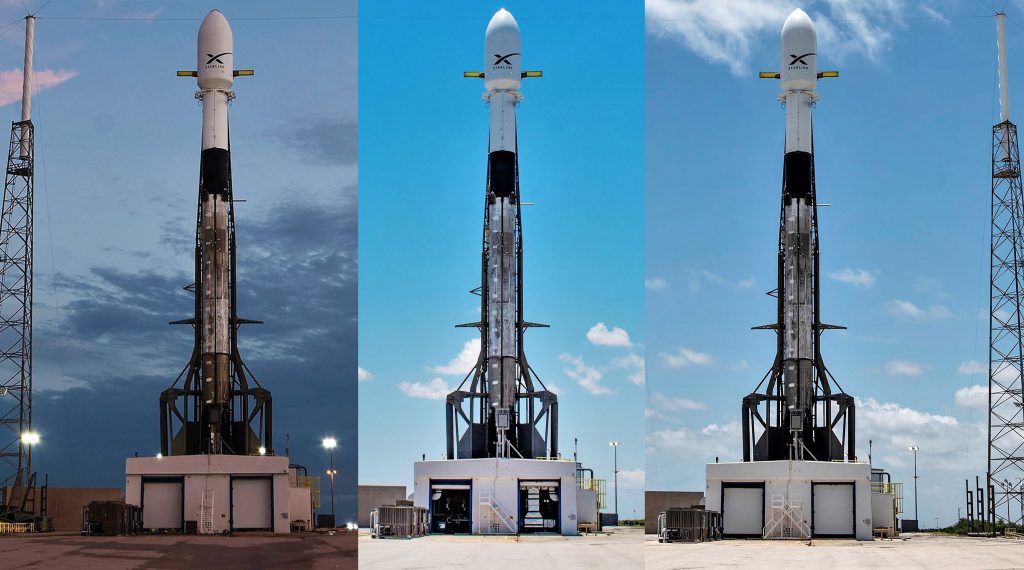
In simple terms, it appears that even a fleet as small as seven Falcon 9 Block 5 boosters may be capable of supporting a vast majority of SpaceX’s commercial launch contracts, while even NASA has come to support launching uncrewed Cargo Dragon missions on flight-proven boosters. In fact, Koenigsmann revealed that a number of customers had nearly come a full 180 degrees in the less than three years that SpaceX has been reflying boosters. Many now actively prefer a flight-proven booster and have come to view them as a more known quantity relative to unproven (i.e. new) hardware.
Aside from a handful of customers – primarily the US military – that explicitly demand new hardware, the rare need for entirely expendable Falcon 9 launches, and the equally rare loss of boosters during unsuccessful landings, SpaceX just doesn’t need nearly as high of a Falcon 9 or Heavy booster production rate to support the same (or even greater) launch cadences.
Check out Teslarati’s Marketplace! We offer Tesla accessories, including for the Tesla Cybertruck and Tesla Model 3.

Elon Musk
Starlink passes 9 million active customers just weeks after hitting 8 million
The milestone highlights the accelerating growth of Starlink, which has now been adding over 20,000 new users per day.

SpaceX’s Starlink satellite internet service has continued its rapid global expansion, surpassing 9 million active customers just weeks after crossing the 8 million mark.
The milestone highlights the accelerating growth of Starlink, which has now been adding over 20,000 new users per day.
9 million customers
In a post on X, SpaceX stated that Starlink now serves over 9 million active users across 155 countries, territories, and markets. The company reached 8 million customers in early November, meaning it added roughly 1 million subscribers in under seven weeks, or about 21,275 new users on average per day.
“Starlink is connecting more than 9M active customers with high-speed internet across 155 countries, territories, and many other markets,” Starlink wrote in a post on its official X account. SpaceX President Gwynne Shotwell also celebrated the milestone on X. “A huge thank you to all of our customers and congrats to the Starlink team for such an incredible product,” she wrote.
That growth rate reflects both rising demand for broadband in underserved regions and Starlink’s expanding satellite constellation, which now includes more than 9,000 low-Earth-orbit satellites designed to deliver high-speed, low-latency internet worldwide.
Starlink’s momentum
Starlink’s momentum has been building up. SpaceX reported 4.6 million Starlink customers in December 2024, followed by 7 million by August 2025, and 8 million customers in November. Independent data also suggests Starlink usage is rising sharply, with Cloudflare reporting that global web traffic from Starlink users more than doubled in 2025, as noted in an Insider report.
Starlink’s momentum is increasingly tied to SpaceX’s broader financial outlook. Elon Musk has said the satellite network is “by far” the company’s largest revenue driver, and reports suggest SpaceX may be positioning itself for an initial public offering as soon as next year, with valuations estimated as high as $1.5 trillion. Musk has also suggested in the past that Starlink could have its own IPO in the future.
News
NVIDIA Director of Robotics: Tesla FSD v14 is the first AI to pass the “Physical Turing Test”
After testing FSD v14, Fan stated that his experience with FSD felt magical at first, but it soon started to feel like a routine.

NVIDIA Director of Robotics Jim Fan has praised Tesla’s Full Self-Driving (Supervised) v14 as the first AI to pass what he described as a “Physical Turing Test.”
After testing FSD v14, Fan stated that his experience with FSD felt magical at first, but it soon started to feel like a routine. And just like smartphones today, removing it now would “actively hurt.”
Jim Fan’s hands-on FSD v14 impressions
Fan, a leading researcher in embodied AI who is currently solving Physical AI at NVIDIA and spearheading the company’s Project GR00T initiative, noted that he actually was late to the Tesla game. He was, however, one of the first to try out FSD v14.
“I was very late to own a Tesla but among the earliest to try out FSD v14. It’s perhaps the first time I experience an AI that passes the Physical Turing Test: after a long day at work, you press a button, lay back, and couldn’t tell if a neural net or a human drove you home,” Fan wrote in a post on X.
Fan added: “Despite knowing exactly how robot learning works, I still find it magical watching the steering wheel turn by itself. First it feels surreal, next it becomes routine. Then, like the smartphone, taking it away actively hurts. This is how humanity gets rewired and glued to god-like technologies.”
The Physical Turing Test
The original Turing Test was conceived by Alan Turing in 1950, and it was aimed at determining if a machine could exhibit behavior that is equivalent to or indistinguishable from a human. By focusing on text-based conversations, the original Turing Test set a high bar for natural language processing and machine learning.
This test has been passed by today’s large language models. However, the capability to converse in a humanlike manner is a completely different challenge from performing real-world problem-solving or physical interactions. Thus, Fan introduced the Physical Turing Test, which challenges AI systems to demonstrate intelligence through physical actions.
Based on Fan’s comments, Tesla has demonstrated these intelligent physical actions with FSD v14. Elon Musk agreed with the NVIDIA executive, stating in a post on X that with FSD v14, “you can sense the sentience maturing.” Musk also praised Tesla AI, calling it the best “real-world AI” today.
News
Tesla AI team burns the Christmas midnight oil by releasing FSD v14.2.2.1
The update was released just a day after FSD v14.2.2 started rolling out to customers.

Tesla is burning the midnight oil this Christmas, with the Tesla AI team quietly rolling out Full Self-Driving (Supervised) v14.2.2.1 just a day after FSD v14.2.2 started rolling out to customers.
Tesla owner shares insights on FSD v14.2.2.1
Longtime Tesla owner and FSD tester @BLKMDL3 shared some insights following several drives with FSD v14.2.2.1 in rainy Los Angeles conditions with standing water and faded lane lines. He reported zero steering hesitation or stutter, confident lane changes, and maneuvers executed with precision that evoked the performance of Tesla’s driverless Robotaxis in Austin.
Parking performance impressed, with most spots nailed perfectly, including tight, sharp turns, in single attempts without shaky steering. One minor offset happened only due to another vehicle that was parked over the line, which FSD accommodated by a few extra inches. In rain that typically erases road markings, FSD visualized lanes and turn lines better than humans, positioning itself flawlessly when entering new streets as well.
“Took it up a dark, wet, and twisty canyon road up and down the hill tonight and it went very well as to be expected. Stayed centered in the lane, kept speed well and gives a confidence inspiring steering feel where it handles these curvy roads better than the majority of human drivers,” the Tesla owner wrote in a post on X.
Tesla’s FSD v14.2.2 update
Just a day before FSD v14.2.2.1’s release, Tesla rolled out FSD v14.2.2, which was focused on smoother real-world performance, better obstacle awareness, and precise end-of-trip routing. According to the update’s release notes, FSD v14.2.2 upgrades the vision encoder neural network with higher resolution features, enhancing detection of emergency vehicles, road obstacles, and human gestures.
New Arrival Options also allowed users to select preferred drop-off styles, such as Parking Lot, Street, Driveway, Parking Garage, or Curbside, with the navigation pin automatically adjusting to the ideal spot. Other refinements include pulling over for emergency vehicles, real-time vision-based detours for blocked roads, improved gate and debris handling, and Speed Profiles for customized driving styles.








